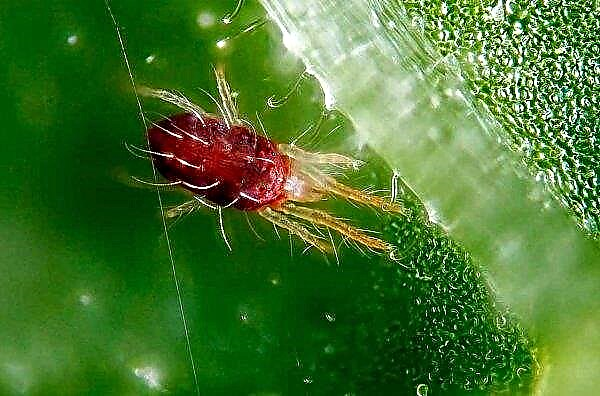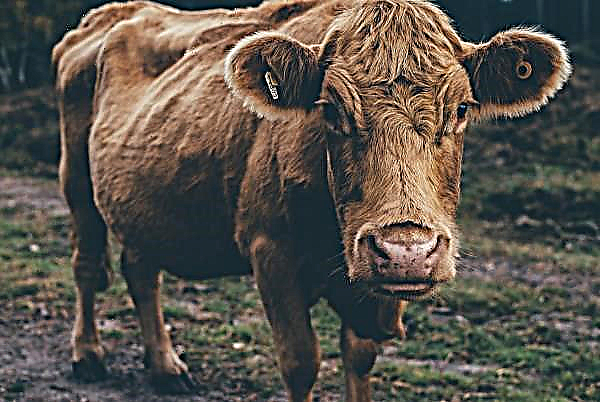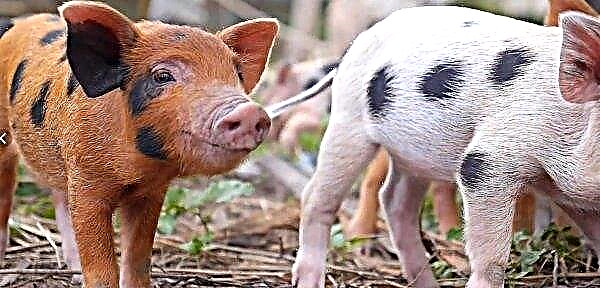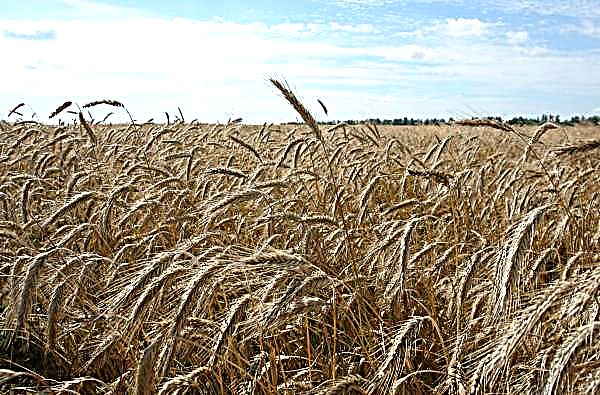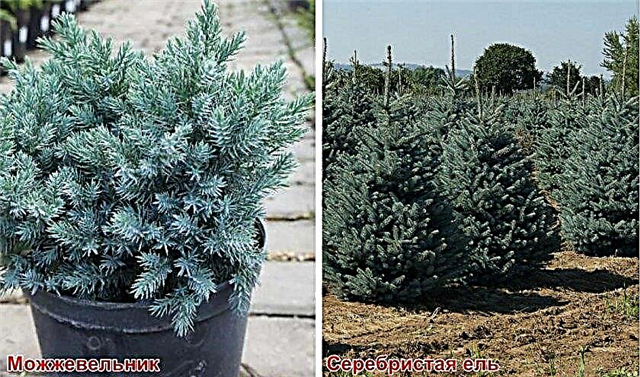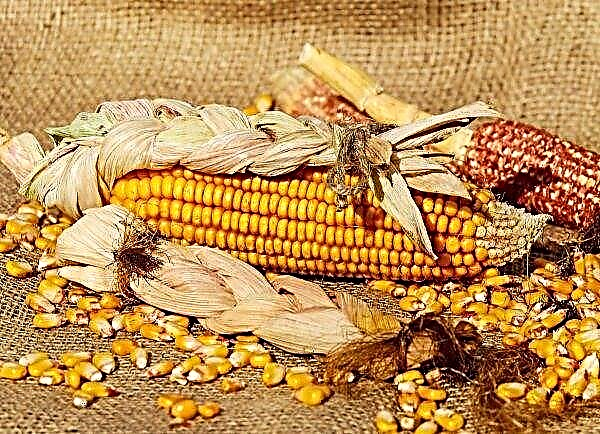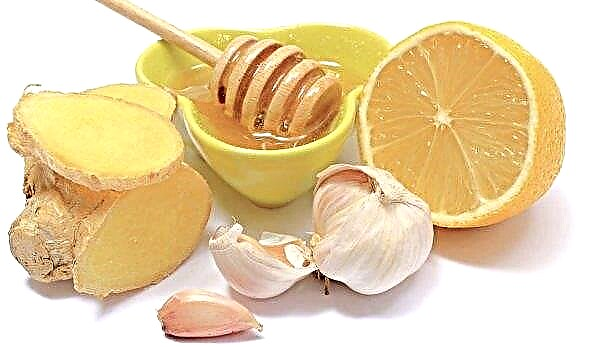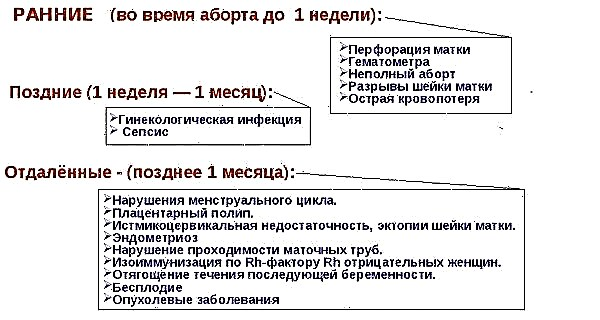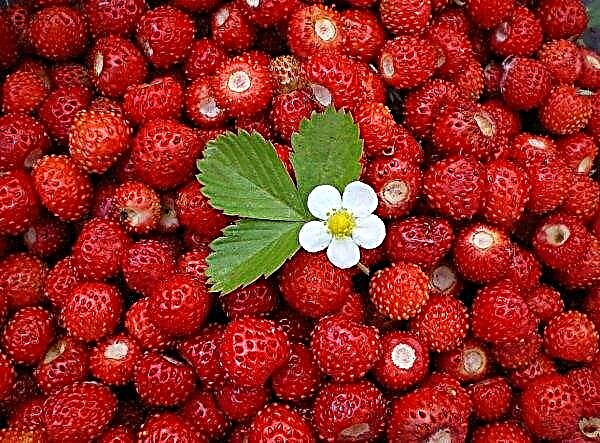There are many insects in the world that bring invaluable benefits to both wildlife and agriculture. One of the most “useful” species is bees, living not only in apiaries, in hives and hollows of trees, but also underground in burrows. About these wild earthen individuals this article.
Can bees be in the ground?
The habitual habitat of insects is sandy or friable soils, with dug holes and chambers for storing nectar, laying off larvae. The species of earthen bees totals over one and a half thousand subspecies.
Did you know? Earth bees are considered a rare species and are listed in the Red Book.
Characteristics of earthen bees
Earth bees are indispensable "helpers" in pollination of fields, gardens, flower beds. They do not pose a threat to humans. They can show aggression, protecting their nest from destruction. Very hardy and efficient.
Appearance
The individuals of this species differ in color, in which dark shades predominate: black, brown, gray and purple. The outer shell of the body of insects - with a thick bristly cover for survival in cold burrows. Eyes - faceted structure, a pair of antennae, two pairs of wings, three pairs of legs, a head with a long proboscis to collect nectar and abdomen.

Where do they live
The bee population is spread all over the world. Mostly live in the wild: in forests, meadows, steep cliffs with sandy soil and near water bodies. In connection with the active deforestation and the expansion of fields for sowing, they are also found in rural areas, in gardens.
Lifestyle
A single species of bees builds small nests, only a few dozen cells. Public and semi-public species settle in colonies - several families can live in one hole. Offspring build their homes near the parental nest.
The structure of holes
The construction of holes takes a lot of time and effort and is an important factor in family survival. The depths of the tunnels dug by bees reaches 80 cm, with numerous branches and dead-end chambers where nectar is stored and ripens, larvae are deposited and grown. First, insects dig an oval tunnel: the loose earth is mixed with saliva, this mixture is laid in a circle, rammed and covered with a secret of the abdominal cavity.

Breeding
Reproduction occurs as follows. The uterus lays eggs. From fertilized - new individuals appear, and from non-fertilized - drones. Before becoming a full-fledged bee, an egg goes through several stages of formation: first, it turns into a larva, then into a chrysalis, and then into an adult. Larvae feed on nectar and pollen.
Main types
The main types of earthen bees include: Andrena-Clarkella, Andrena-Magna, Halikt Sphycodes, Long-bee, Sherstobits, Leaf cutters (megahills), Nomada (cuckoo), Mellithids, Carpenter.
Andrena Clarkella
Andrena-clarkella - in appearance, insects are similar to bumblebees (in a reduced form). A distinctive feature is the presence of their red hind legs. The size is approximately 8 to 17 mm. The color is varied: from black to blue, sometimes orange is found. The head and upper back are covered with a slight pubescence. Males lack a sting and differ from females in the presence of long, thin mustaches of brown or gray colors. Also, males are slightly smaller than females. Insects prefer to collect nectar from dandelions or coltsfoot.

Andrena Magna
A rare species of arthropods, with their number rapidly decreasing. The length of the female is 16–19 mm, the male is 14–15 cm. The insect is black, the wings are black with a purple tint. Upper tergites (dorsal half rings) of a dark brown hue. Males and females do not visually differ from each other. The abdomen is almost completely covered with short blond hairs. The upper lip, clypeus and spots on the upper jaws are yellow.

Halict sfekodes
Halict sfekodes - these are small bees 5–15 mm in size, resembling a wasp. They differ from other species in bright red abdomen or green, with a metallic sheen. Life expectancy of this species is relatively short. The male dies shortly after mating, the female lives until spring. But the female founder can live 4-6 years.

Long bee
Long-nosed insects mainly live in the Mediterranean. They differ in gray-red body color. The length of the female is 14–16 mm; the males are slightly smaller. They have thick and long antennae (because of this the name appeared). Larvae feed on harvested nectar and pollen, collected mainly from leguminous plants. Two females can get along in one nest.

Sherstobits
Sherstobits - a species of insects that live alone. They themselves do not build homes, so they occupy other people's holes. Their offspring are grown in cells created from resinous substances and plant fibers. Insects 12-15 mm in size, have a long proboscis, thanks to which they can collect nectar from flowers with a deep corolla.

Leaf cutters (megahills)
Leaf cutters (megahills) have powerful jaws, thanks to which they can gnaw through plant leaves through. The length of the female is 12 mm, the male is 11 mm. The body color is black, which is abundantly covered with gray and red hairs. They live in other people's burrows, use leaf fragments to build nests. Insects are not honey carriers, but excellent pollinators.

Nomada (cuckoo)
Nomada - looks very much like a honey bee, but cannot collect pollen due to the lack of a special apparatus. The size of insects is 3-14 mm, the color is bright, in which the combination of black and red-yellow colors predominates. The body is not covered with fluff. They do not build their nests. The behavior is similar to cuckoos - they lay their eggs in other people's bee minks. Their larvae lead a parasitic way of life, are very voracious and able to kill a bee and eat the nectar collected by it.

Mellithids
Mellithids are very similar to domesticated bees. The body, 8–15 mm long, is covered with long hairs, especially the tibia and the first segments of the hind limbs. Form large nests in the ground. Adults prefer to feed on pollen from legumes and asters. They are excellent pollinators.

A carpenter
A carpenter is a solitary, hardworking species, characterized by large sizes: about 20–28 mm in length. The body is bright black, covered with sparse black hairs, small wings with indented edges of a dark blue tint. They build their nests in the cavities of old wood, for this they are called "carpenters". Sometimes they populate in already prepared burrows of rodents or in natural depressions in sandy cliffs. Larvae develop in nests filled with nectar and pollen.

Ground Bee Honey
Wild honey is very aromatic, with a tart taste, quite thick, has a rich brown color, is distinguished by a high content of beef and wax. It is valuable in that it has a long shelf life without loss of healing properties. It is recommended to store the product in clay or wooden utensils.
Did you know? Bees have poor eyesight, but their sense of smell is very developed, so they can feel a flower with nectar at a kilometer distance.
Product benefits
Honey helps with colds (bronchitis, pneumonia, acute respiratory infections), diseases of the gastrointestinal tract (stomach ulcer, gastritis), and also strengthens the immune system and is used in cosmetology. Due to its composition, honey is easily absorbed, saturates the body with micro and macro elements. It is used in the preparation of various ointments.

How to get
The extraction of "wild" honey is not a simple process during which the destruction of the bee house, the death of the family can occur. Therefore, make a selection of sweet treats as carefully as possible. The best time to collect the product is autumn, by this period the nectar is fully ripe.
Before you start to extract honey, you need to do the following: protect the exposed areas of the body from bites, “calm” the bees with smoke, and only then proceed with the excavation of the nest and the search for healing nectar. In the wild, there are no equally sized layers with honeycombs - they have the shape of pyramids, pillars, drops.
Important! The collection of honey should be moderate, it is necessary to leave a large part of the supply of honey to bees for the winter, so that they do not die of starvation.
The role of earthen bees in nature
High and high-quality yields of fruits, berries and seeds cannot be imagined without the participation of bees. They are pollinators of the flora, without harming the flower. Great benefits come from agricultural land, fields sown with cultivated plants and cereals.
Are bees dangerous for humans?
Bees are of absolute benefit: high yield, useful and trace-rich honey. But insects pose a great danger to people suffering from allergic manifestations. Bee stings are very painful, the poison, if it enters the mucous membranes and into the blood, can cause severe contraction (spasm) of the muscles and sharp swelling of the larynx, which often leads to death.

Do I need to fight them
If a swarm has settled on a garden plot, then over time the colony will increase in size, which may make the household territory unsuitable for cultivation, and become a dangerous "neighbor". Some species of insects described lead a parasitic lifestyle - they can steal products necessary for life from domesticated bees.
Important! Before you start the fight with “uninvited guests”, you need to prepare protective clothing and equipment: a jacket, overalls, beekeeper hat, leather gloves and a smoker. Have antihistamines available.
Ways to fight
To combat insects, it is recommended to contact a special disinfection service. If there is no opportunity to call a specialist, then you can get rid of "pests" yourself. The best time of the year to remove nests is the end of winter, during this period the colonies are not numerous, less aggressive and inactive. Consider the most common methods of struggle.
Boiling water
Colony can be quickly drowned. This method requires a large amount of boiling water (15–20 l), since burrows have many strokes. Hot water must be poured into the entrance of the tunnel. The application of this method does not guarantee a 100% result, since surviving individuals may remain who will revive the swarm. If the nest is in the garden, it is possible to scald the root system of growing trees and bushes.

Digging soil
Digging the soil is effective in the fight against earthen bees only if the lowest point of the bee nest is no deeper than 40 cm (on the bayonet of the shovel). Otherwise, the insects will remain alive and it is possible that they can attack a person and sting him.
Traps
Popular a way to kill arthropod insects is a plastic bottle trap. To do this, you need to prepare a plastic container, the volume of which does not matter. From the neck, measure 8-10 cm down and cut off. Place the cut-off part inside the bottle with the narrow end. Pour sweet syrup into it and place it near the hole. Bees, once inside, due to the viscosity of the liquid will not be able to get back out. The contents of the trap can be replaced with beer or kvass.
Chemicals
The most effective way is to kill ground insects to chemicals. Before you start working with poisons, carefully read the instructions for use. First, it is necessary to “calm” the bees with the help of smoke, pour poison into the hole or pour poison, then destroy (collapse) or close the entrance tightly. Often used such drugs: "Delta Zone" - odorless, has high efficiency and speed of destruction; "Gef" - an insecticidal agent; "Dichlorvos" - against flying and crawling insects.

Undoubtedly, earthen bees are of great benefit by pollinating a large number of flowering plants. But their stay in the garden is undesirable. Therefore, it is recommended to destroy the nests in every possible way in order to avoid potential danger on their part in the future.

